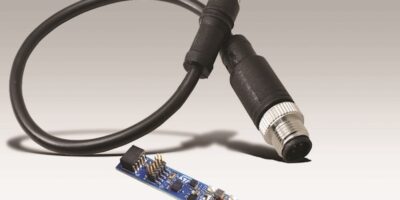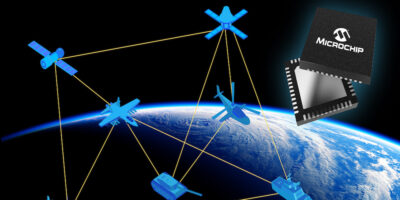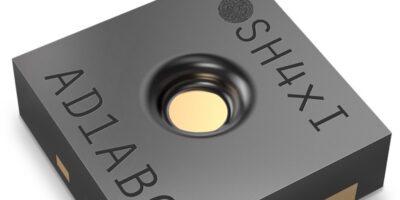Featuring a slim, 45.8mm x 8.3mm main board, the STMicroelectronics Steval-IOD04KT1 industrial-sensor kit can help simplify the development of compact IO-Link (IEC 61131-9) sensors for fieldbus-independent point-to-point bi-directional communication.
The main board integrates an STM32G0 microcontroller with ST’s L6364W IO-Link transceiver, IIS2MDC three-axis digital output magnetometer and ISM330DHCX iNemo inertial module with machine-learning core. The compact dimensions, permitted by the tiny chip-scale package sizes of the L6364W, in 2.5mm x 2.5mm CSP19, and the STM32G0 in 2.3mm x 2.5mm WLCSP25, allow small sensor enclosure.
Fitted with a four-pole M8 industrial connector, the board connects to any IO-link main controller that supports IO-Link 1.1. A 10-pin expansion connector allows adding extra sensing modalities.
The companion STM32Cube software pack, STSW-IOD04K, provides the IO-Link device description (IODD) file, ST-proprietary IO-Link demo-stack, and routines for managing the L6364W and MEMS sensors. The software, which allows hot-plug activation, contains libraries that assist development of various types of sensors, and ST says it is designed for easy integration with additional X-CUBE software to further expand the sensor’s functionality.
The IC implements an IO-Link compliant electrical interface and digital features including wake-up recognition, a 15-byte data buffer, and quartz-free IO-Link clock extraction. Surge-pulse protection up to ±2.5kV, ESD protection and reverse-polarity protection are all on-chip, helping to save users from designing-in additional components and helping to cut down on PCB space and bill-of-materials costs. With 3.3V and 5.0V LDOs on-chip, and a digitally configurable step-down DC/DC converter, the L6364W can source up to 50mA load current to help developers meet the efficiency and EMC requirements of their application.
The L6364W is part of ST’s family of ICs that provides a complete set of solutions to help simplify IO-Link physical-layer implementation. It includes the L6360 IO-Link control-side transceiver and L6362A and L6364Q IO-Link device ICs.
The Steval-IOD04KT1 kit comes with everything needed to connect the sensor for evaluation and use, including an IO-Link M8-M12 adapter cable and ST’s STLink-V3MINI programmer.
Go to http://www.st.com







